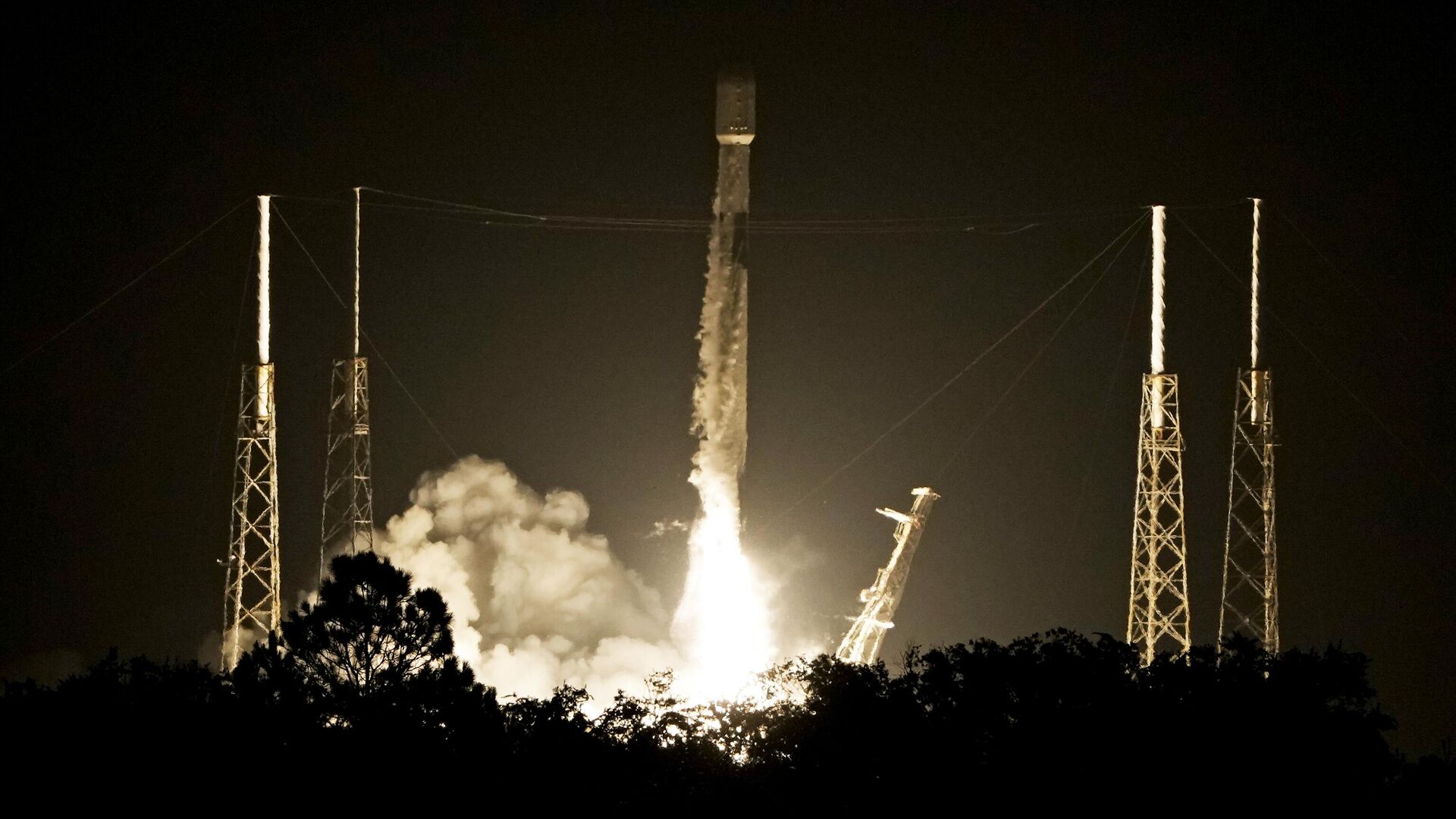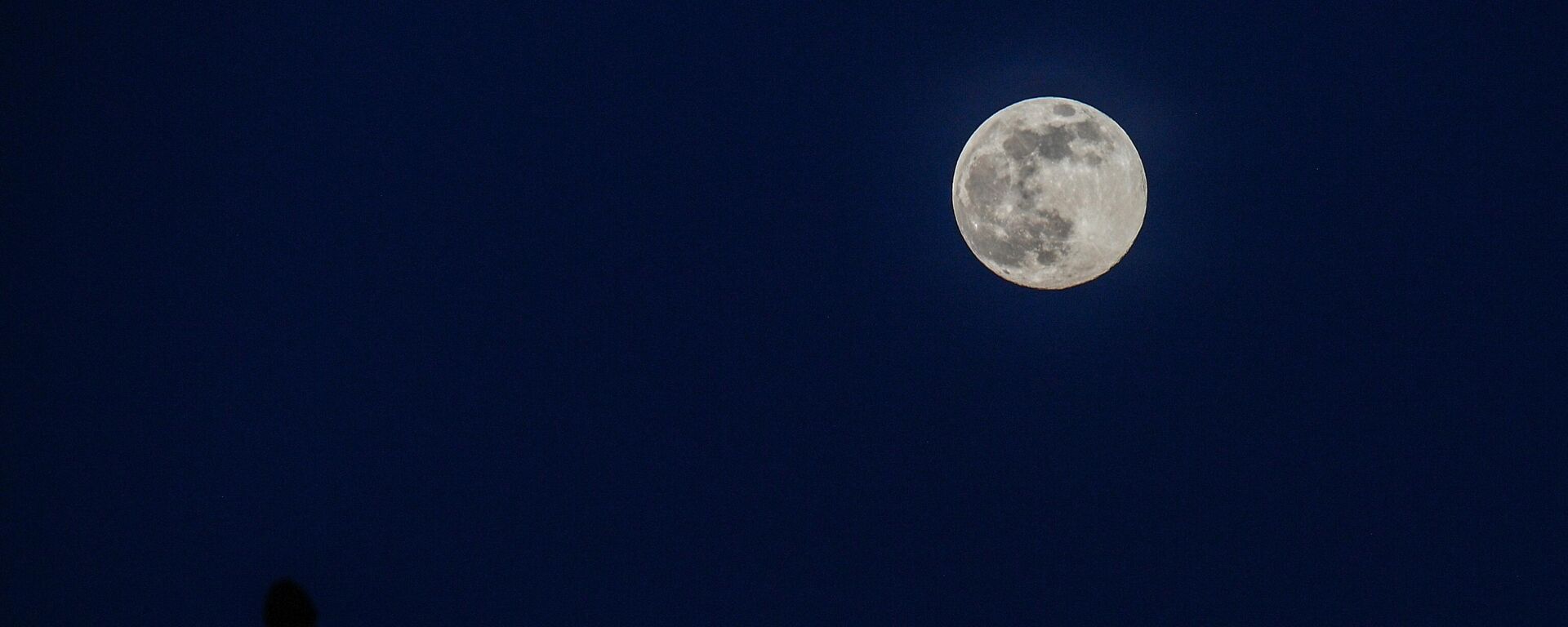https://sputniknews.in/20231004/chinas-lunar-ambitions-soar-with-change-6-amid-historic-collaboration-with-pakistan-4574329.html
China's Lunar Ambitions Soar With Chang'e 6 Amid Historic Collaboration With Pakistan
China's Lunar Ambitions Soar With Chang'e 6 Amid Historic Collaboration With Pakistan
Sputnik India
In a significant stride towards lunar exploration, China is gearing up to launch its sixth lunar mission, Chang'e 6, and it's not traveling alone.
2023-10-04T15:38+0530
2023-10-04T15:38+0530
2023-10-04T15:38+0530
pakistan
south asia
china
space satellite
space exploration
space industry
moon
moon mission
science & tech
science diplomacy
https://cdn1.img.sputniknews.in/img/07e7/07/19/3171050_0:160:3072:1888_1920x0_80_0_0_a4d3df55f94b09d08059492d35ba3969.jpg
The China National Space Administration (CNSA) announced that the Chang’e 6 mission will be launched to explore the far side of the Moon in the first half of 2024. The mission will carry payloads to the Moon from Pakistan, the European Space Agency, France, and Italy.Chang'e 6's collaborative venture showcases China's commitment to international cooperation in space exploration and highlights the burgeoning global interest in lunar exploration.China's Lunar AspirationsChina's Chang'e programme has been at the forefront of lunar exploration, beginning with Chang'e 1 in 2007 and progressing to Chang'e 5, which successfully brought back lunar samples in 2020. The Chang'e missions have consistently pushed the boundaries of what is known about Earth's closest celestial neighbour.Chang'e 6 is the latest instalment in this series, and it comes with ambitious goals. Its primary objectives include conducting scientific research, exploring the lunar South Pole-Aitken Basin, and furthering human understanding of the Moon's geology and resources. The rover will be equipped with advanced scientific instruments, enabling it to analyse lunar samples, study lunar surface conditions, and even test new technologies.The South Pole-Aitken basin (SPA) is a colossal, ancient impact crater roughly 1,550 miles (2,500 kilometres) in diameter that covers almost a quarter of the Moon's far side. The impact basin, considered to be the oldest on the Moon, holds numerous clues about its history and that of the solar system.The probe is scheduled to be launched on a Long March 5 rocket in May 2024, from the Wenchang Satellite Launch Center on Hainan Island, China. The duration of the mission is approximately 53 days.It should be noted that Chang'e 6 was listed as an early part of a joint project of China with Russia to establish an International Lunar Research Station in the future.Pakistan's Space JourneyWhat sets Chang'e 6 apart is its historic collaboration with Pakistan. The mission will carry a CubeSat satellite developed by Pakistan, also known as IceCube-Q, demonstrating the growing interest in space exploration in the South Asian nation.As the name suggests, the Pakistani satellite will detect ice traces on the lunar surface and conduct its own experiments and data collection. This marks a significant milestone for Pakistan's space programme, positioning it as a valuable contributor to international space endeavours.However, this is not the first space mission or collaboration for Pakistan. The space journey began with the establishment of the Space and Upper Atmosphere Research Commission (SUPARCO) in 1961. The organization's first successful satellite launch, Badr-1, occurred in 1990, placing Pakistan on the global space map.Pakistan also has notable achievements in the successful launch of communication satellites, such as PAKSAT-1R and PAKSAT-1A. These satellites have enhanced communication infrastructure, providing telecommunication and broadcasting services to remote areas.Moreover, the South Asian nation launched its first remote sensing satellite, PRSS-1, in 2018. This satellite has proven crucial for monitoring natural disasters, agriculture, and urban development. It has also strengthened national security and intelligence capabilities.Pakistan's participation in scientific missions has been limited, but it successfully launched the country's first scientific satellite, BADR-B, in 2001. This mission aimed to conduct space research, gather scientific data, and promote international collaboration.Moreover, the country has collaborated with various international space agencies, including NASA and the China National Space Administration (CNSA). These partnerships have allowed for knowledge exchange and access to advanced space technology.Global Significance of MissionThe Chang'e 6 mission is a testament to the peaceful and cooperative nature of space exploration, transcending international boundaries. It underscores the idea that scientific advancements and space exploration are global endeavours, and collaboration fosters innovation and mutual understanding.China's willingness to collaborate with international partners on such lunar missions signifies its commitment to the principles of global cooperation in space exploration.
https://sputniknews.in/20230925/india-works-on-lunar-missions-capable-of-bringing-moon-samples-to-earth-reports-4432119.html
pakistan
south asia
china
moon
Sputnik India
feedback.hindi@sputniknews.com
+74956456601
MIA „Rossiya Segodnya“
2023
Aneela Rashid
https://cdn1.img.sputniknews.in/img/07e6/0c/0d/74548_0:0:485:484_100x100_80_0_0_821526e967ae85d041e2d30ee34fa1de.jpg
Aneela Rashid
https://cdn1.img.sputniknews.in/img/07e6/0c/0d/74548_0:0:485:484_100x100_80_0_0_821526e967ae85d041e2d30ee34fa1de.jpg
News
en_IN
Sputnik India
feedback.hindi@sputniknews.com
+74956456601
MIA „Rossiya Segodnya“
Sputnik India
feedback.hindi@sputniknews.com
+74956456601
MIA „Rossiya Segodnya“
Aneela Rashid
https://cdn1.img.sputniknews.in/img/07e6/0c/0d/74548_0:0:485:484_100x100_80_0_0_821526e967ae85d041e2d30ee34fa1de.jpg
chang'e 6 mission, what is chang'e 6, collaboration with pakistan, cubesat satellite, pakistan space journey, space studies in pakistan, china pakistan cooperation, new technologies, space exploration, lunar research station, china space studies, lunar missions
chang'e 6 mission, what is chang'e 6, collaboration with pakistan, cubesat satellite, pakistan space journey, space studies in pakistan, china pakistan cooperation, new technologies, space exploration, lunar research station, china space studies, lunar missions
China's Lunar Ambitions Soar With Chang'e 6 Amid Historic Collaboration With Pakistan
In a significant stride towards lunar exploration, China is gearing up to launch its sixth lunar mission, Chang'e 6, and it's not traveling alone. The mission is poised to make history by carrying a passenger from Pakistan – the CubeSat satellite.
The China National Space Administration (CNSA) announced that the Chang’e 6 mission will be launched to explore the far side of the Moon in the first half of 2024. The mission will carry payloads to the Moon from Pakistan, the European Space Agency, France, and Italy.
Chang'e 6's collaborative venture showcases China's commitment to
international cooperation in space exploration and highlights the burgeoning global interest in lunar exploration.
China's Lunar Aspirations
China's Chang'e programme has been at the forefront of lunar exploration, beginning with Chang'e 1 in 2007 and progressing to Chang'e 5, which successfully brought back
lunar samples in 2020. The Chang'e missions have consistently pushed the boundaries of what is known about Earth's closest celestial neighbour.
Chang'e 6 is the latest instalment in this series, and it comes with ambitious goals. Its primary objectives include conducting scientific research, exploring the lunar South Pole-Aitken Basin, and furthering human understanding of the Moon's geology and resources. The rover will be equipped with advanced scientific instruments, enabling it to analyse lunar samples, study
lunar surface conditions, and even test new technologies.
The South Pole-Aitken basin (SPA) is a colossal, ancient impact crater roughly 1,550 miles (2,500 kilometres) in diameter that covers almost a quarter of the Moon's far side. The impact basin, considered to be the oldest on the Moon, holds numerous clues about its history and that of the solar system.
The probe is scheduled to be launched on a Long March 5 rocket in May 2024, from the Wenchang Satellite Launch Center on Hainan Island, China. The duration of the mission is approximately 53 days.
It should be noted that Chang'e 6 was listed as an early part of a joint project of China with Russia to establish an International Lunar Research Station in the future.
What sets Chang'e 6 apart is its historic collaboration with Pakistan. The mission will carry a CubeSat satellite developed by Pakistan, also known as IceCube-Q, demonstrating the growing interest in space exploration in the South Asian nation.
As the name suggests, the Pakistani satellite will detect ice traces on the lunar surface and conduct its own experiments and data collection. This marks a significant milestone for Pakistan's space programme, positioning it as a valuable contributor to
international space endeavours.
However, this is not the first space mission or collaboration for Pakistan. The space journey began with the establishment of the Space and Upper Atmosphere Research Commission (SUPARCO) in 1961. The organization's first successful satellite launch, Badr-1, occurred in 1990, placing Pakistan on the global space map.
Pakistan also has
notable achievements in the successful launch of communication satellites, such as PAKSAT-1R and PAKSAT-1A. These satellites have enhanced communication infrastructure, providing telecommunication and broadcasting services to remote areas.
Moreover, the South Asian nation launched its first remote sensing satellite, PRSS-1, in 2018. This satellite has proven crucial for monitoring natural disasters, agriculture, and urban development. It has also strengthened national security and
intelligence capabilities.
Pakistan's participation in scientific missions has been limited, but it successfully launched the country's first scientific satellite, BADR-B, in 2001. This mission aimed to conduct space research, gather scientific data, and promote international collaboration.
Moreover, the country has collaborated with various international space agencies, including NASA and the China National Space Administration (CNSA). These partnerships have allowed for knowledge exchange and access to advanced
space technology.
Despite these achievements, however, Pakistan's space programme faces numerous challenges, such as the lack of funding. Hence, collaboration with China on the Chang'e 6 mission is a historic moment for the country's space odyssey.
Global Significance of Mission
The Chang'e 6 mission is a testament to the peaceful and cooperative nature of space exploration, transcending international boundaries. It underscores the idea that scientific advancements and space exploration are global endeavours, and collaboration fosters innovation and
mutual understanding.
China's willingness to collaborate with international partners on such lunar missions signifies its commitment to the principles of global cooperation in space exploration.




